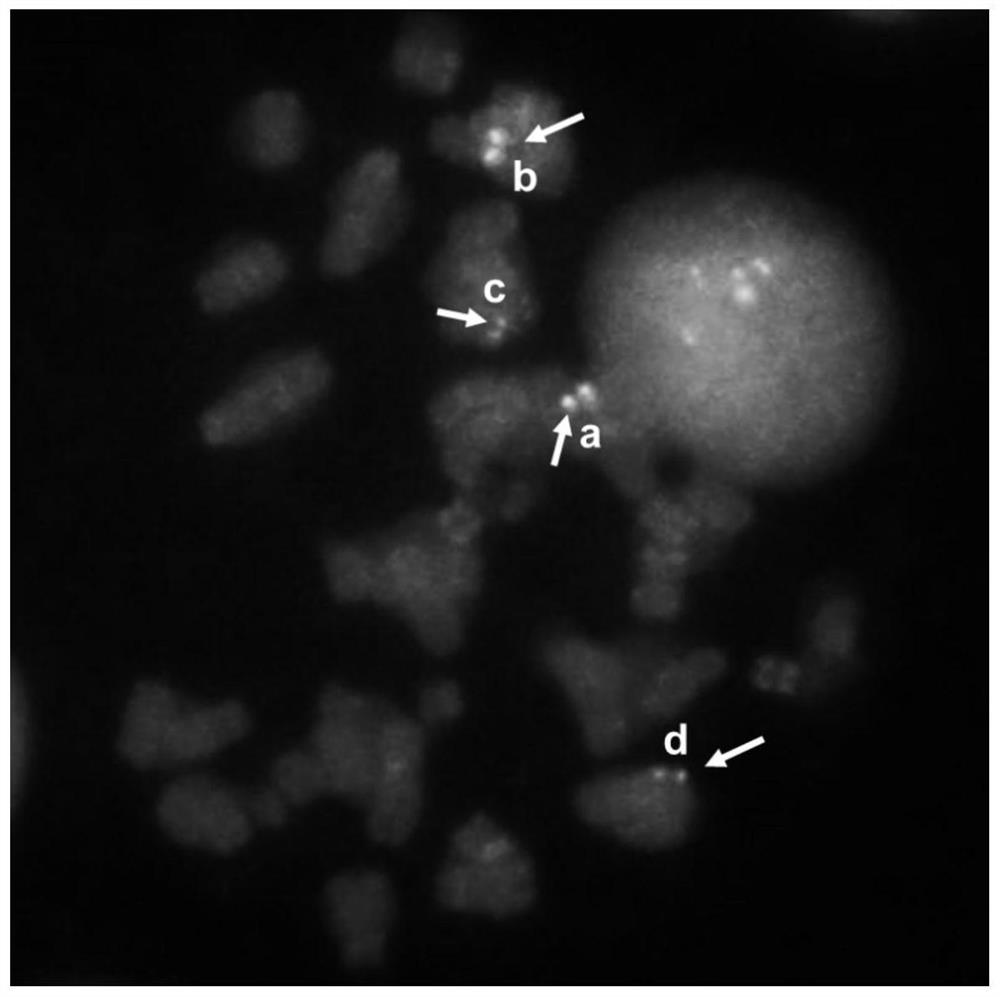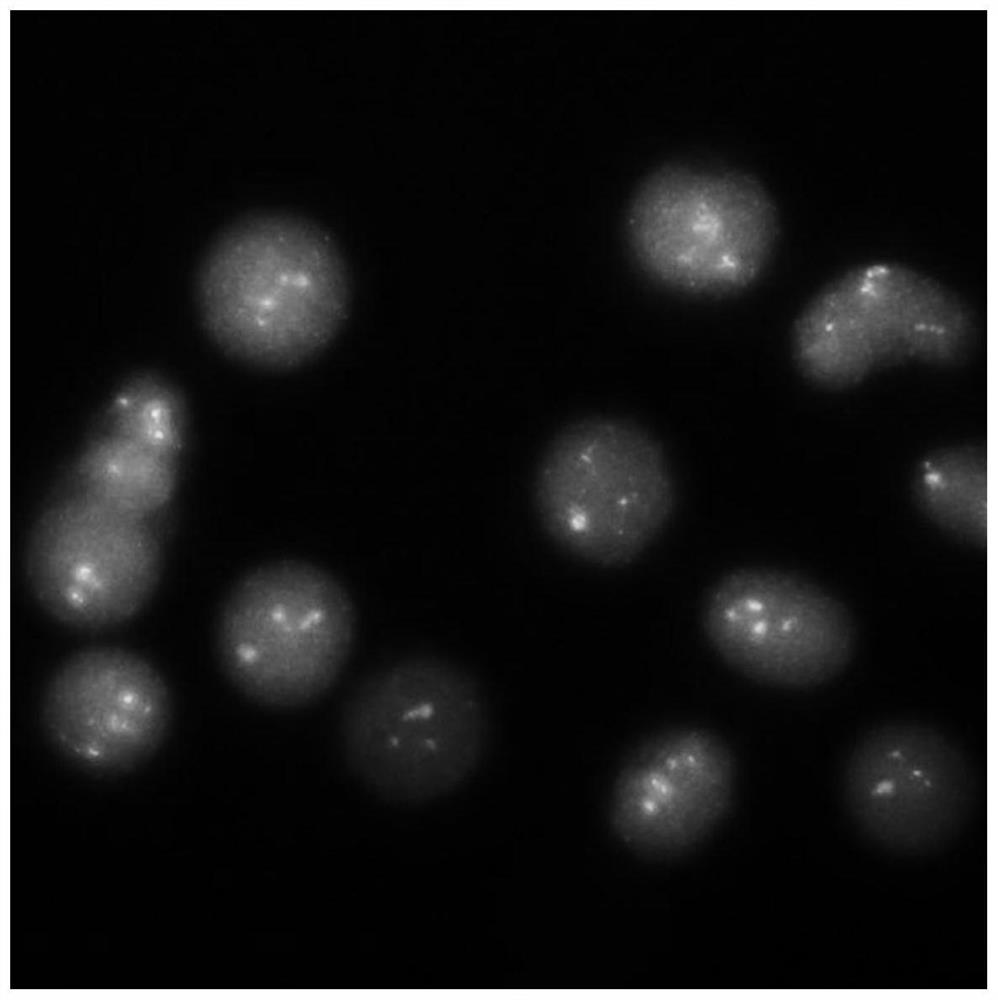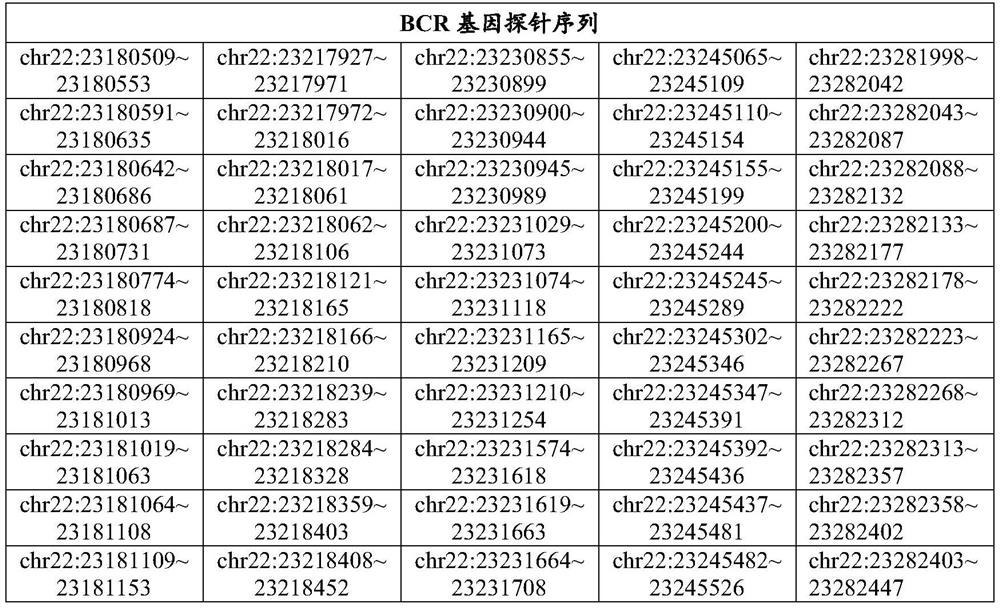Fluorescence in-situ hybridization probe group for detecting BCR/ABL gene and application of fluorescence in-situ hybridization probe group
A fluorescence in situ hybridization and probe set technology, which can be used in DNA/RNA fragmentation, recombinant DNA technology, and the determination/inspection of microorganisms. It can solve the problems of low probe specificity, low hybridization efficiency, and long hybridization time. , to achieve the effect of improved resolution, high sensitivity and strong specificity
- Summary
- Abstract
- Description
- Claims
- Application Information
AI Technical Summary
Problems solved by technology
Method used
Image
Examples
Embodiment 1
[0021] This embodiment provides a method for preparing a BCR / ABL gene fluorescent in situ hybridization probe set, which specifically includes the following steps:
[0022] S1, based on the sequences of the BCR and ABL genes, design nucleotide sequences containing 45 bases in the 100kb region without repetitive sequences, set the Tm value of the probe at 50°C, and the GC content range of 40-60% , after discarding the sequence containing AAAA / TTTT / CCCC / GGGG, 3500 candidate probes were obtained, and after the whole gene (hg38) BLAST comparison analysis, a total of 2204 nucleotide sequences were finally obtained, as shown in Table 1 below ;
[0023] S2, add a 20bp tag sequence to the 5' end of each nucleotide sequence and a 20bp tag sequence to the 3' end to obtain a series of characteristic primers with tag sequences, wherein the 5' end tag sequence is : TAATACGACTCACTATAGGG, the 3' end tag sequence is: CCGCTGAGCAATAACTAGCA;
[0024] S3, using high-throughput chip synthesis te...
Embodiment 2
[0049] Embodiment 2 Normal people's peripheral lymphocyte droplet experiment
[0050] Materials: human peripheral blood lymphocyte culture medium, colchicine, hypotonic solution (0.4% KCl), fixative solution (methanol:acetic acid=3:1, volume ratio).
[0051] S1, cell culture and synchronization: take 0.4mL heparin anticoagulated whole blood (from the hospital) in human peripheral blood lymphocyte culture medium, mix well and culture in a constant temperature incubator at 37°C and 5% CO2 for 72h, and stop at For the first 4 hours, add colchicine to the medium to a final concentration (0.1 μg / mL) and continue culturing for 4 hours;
[0052]S2, collection and fixation: collect the medium, centrifuge at 500g for 5min, discard the supernatant, add 0.4% KCl hypotonic solution and incubate for 30min, then fix the cells with methanol-glacial acetic acid mixture, let stand at room temperature for 10min, centrifuge at 500g to pellet the cells , repeat the cell fixation step once, after...
Embodiment 3
[0059] Refer to the method in Example 2 to detect slides containing 50 metaphase lymphocytes, and the results are shown in Table 3 below. It can be seen that the FISH signal points of the BCR gene probe are all 99, and the sensitivity reaches 99%; ABL There are 99 FISH signal points of the gene probes, and the sensitivity reaches 99%.
[0060] Table 3 Sensitivity test results of probes
[0061]
PUM
| Property | Measurement | Unit |
|---|---|---|
| Sensitivity | aaaaa | aaaaa |
Abstract
Description
Claims
Application Information
 Login to View More
Login to View More - R&D
- Intellectual Property
- Life Sciences
- Materials
- Tech Scout
- Unparalleled Data Quality
- Higher Quality Content
- 60% Fewer Hallucinations
Browse by: Latest US Patents, China's latest patents, Technical Efficacy Thesaurus, Application Domain, Technology Topic, Popular Technical Reports.
© 2025 PatSnap. All rights reserved.Legal|Privacy policy|Modern Slavery Act Transparency Statement|Sitemap|About US| Contact US: help@patsnap.com



